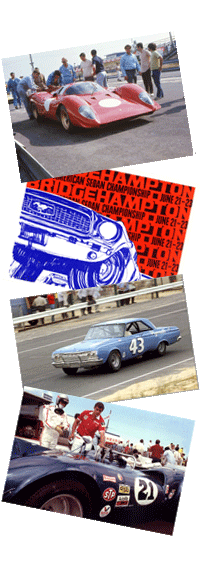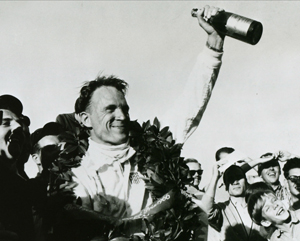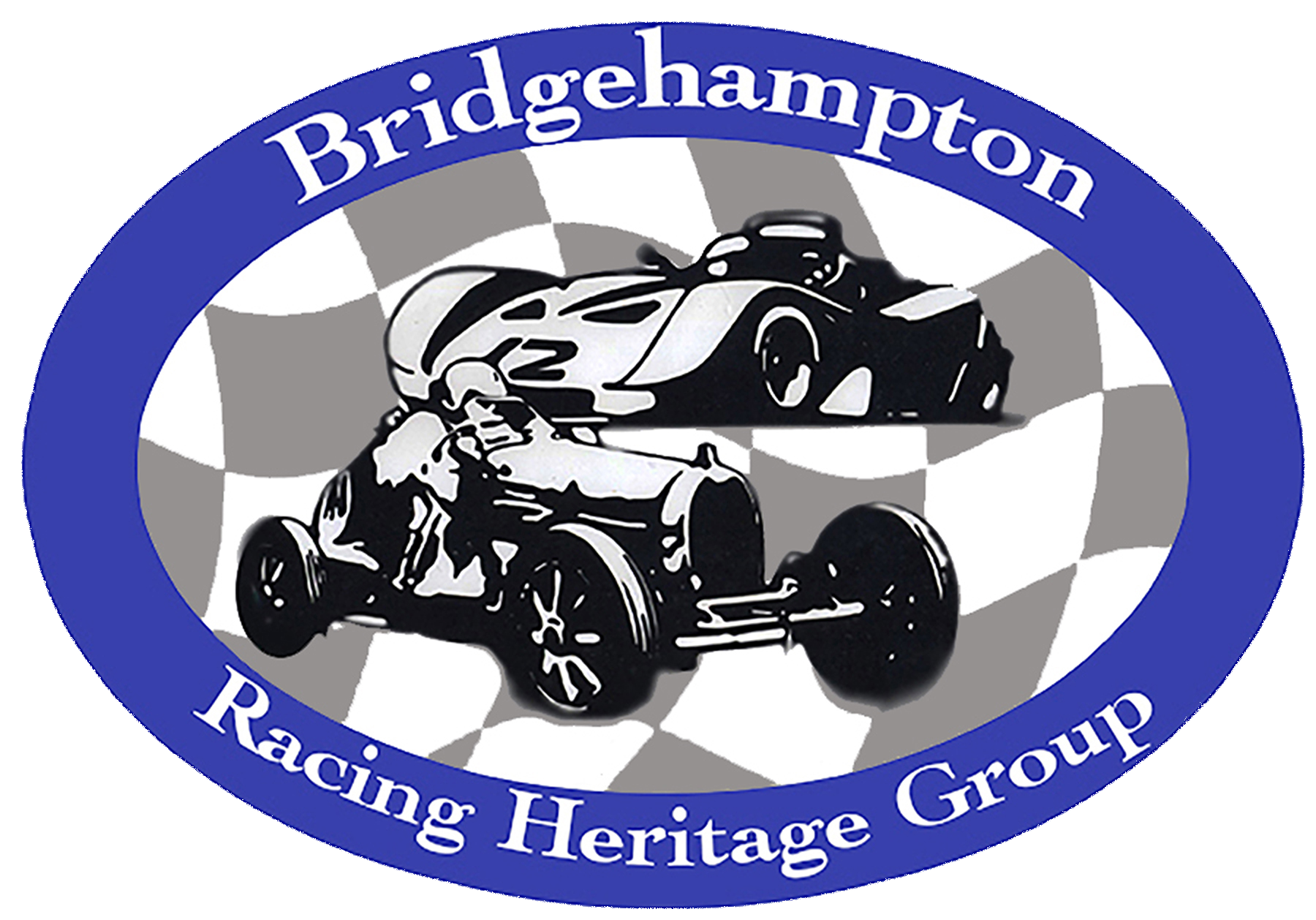
History continued...
The New York Daily Mirror came on board as sponsor of the Bridgehampton Double 400 in 1962. This was the first event ever sanctioned at the circuit by FIA, the worldwide automobile manufacturer's association that schedules professional racing throughout Europe. Long Island's South Fork was thereby blessed as a destination for the elite of the sports car racing community from around the world.
Enzo Ferrari always sent a carfor Luigi Chinetti's North American Racing Team, which considered Bridgehampton its home track. Chinetti introduced a young Mario Andretti, eventually to become America's second World Champion, to sports car racing at Bridgehampton. Said an awed Andretti after a few laps of The Bridge: “This place is really challenging.”
In 1965 the races were extended to 500 kilometers and graced by a Memorial Trophy to the recently deceased Ed Krom. The natural amphitheater which commanded a panoramic view of the hairpin curve and the uphill straightaway was renamed Krom Overlook. From here, the peaceful serenity of the bays offered a stimulating contrast to the frenzied excitement of racing and the blaring rock music from the 60’s hippie vans on the hilltop. To those lucky enough to have watched a race from here, it’s an experience not to be forgotten.
By the mid-60s, "The Bridge" was hosting four big-time spectator events annually. Bridgehampton Enterprises continued to operate the track throughout the glorious days of the Trans-Am, when Detroit automakers fought it out in the dunes of Bridgehampton and the U.S. Road Racing Championship, SCCA's first professional series. Then came its successor, the glorious Canadian American Challenge for Group 7 "Unlimited Prototypes" more popularly know as the Can-Am. This was international competition for the fastest cars in the world. There were virtually no rules -- experimentation and wild ideas ruled. It should be noted that these were frightening machines to drive. At speed, the Can-Am race cars were usually on the ragged edge of disaster. Aerodynamics was a primitive science, and cars at The Bridge always seemed to be trying to leap out of control. The race car buildersconcentrated on adding more power -- improvements to brakes, tires, steering and aerodynamics were an afterthoughtin those days. This made for some spectacular race-watching on the hills of Bridgehampton, where averagelap speeds quickly topped 110 mph.
Hosting the world’s fastest cars and people

The pits of Bridgehampton were equally fascinating. Cutting-edge racecars from around the world, film stars, some of the most beautiful women in the world and awestruck kids mingled in happy celebration of speed. On September 18, 1966, Californian Dan Gurney revisited his roots on Long Island when he ran away with the inaugural Bridgehampton Can-Am in a Lola T70 Ford. It remained the only Ford victory in the history of the Can-Am, and the excitement of Gurney, arguably America’s most popular racer during the 1960s, is clear.
This race was also celebrated for the introduction of the first-ever winged race car, Jim Hall’s fabulous Chaparral. When the white Chaparrals for world champion Phil Hill and Jim Hall were wheeled off the enclosed trailer, the sensation literally could be heard around the world.
That first Can-Am race featured American stars Mark Donohue, George Follmer, Sam Posey, Al Unser Sr. and others. Right from the outset, the Can¬Am attracted the world's best drivers and race car builders. In the first race, Gurney bested New Zealander Chris Amon by a few car lengths and World Champion John Surtees as well asBruce McClaren, a constructor of genius and FormulaOneracer who went on to sweep the series in future years with his dazzling orange cars until his untimely death in pre-season testing in 1970.
In June, 1971, thanks to Fred Stecker and his SCCA Paddock Marshals, a flagpole was erected in pit lane with a bronze plaque summarizing McClaren's philosophy:
"To do something well is so worthwhile that to die trying to do it better cannot be foolhardy. It would be a waste of life to do nothing with one's ability,
for I feel that life is measured in achievement, not in years alone." ~BRUCE McCLAREN 1937-1970
